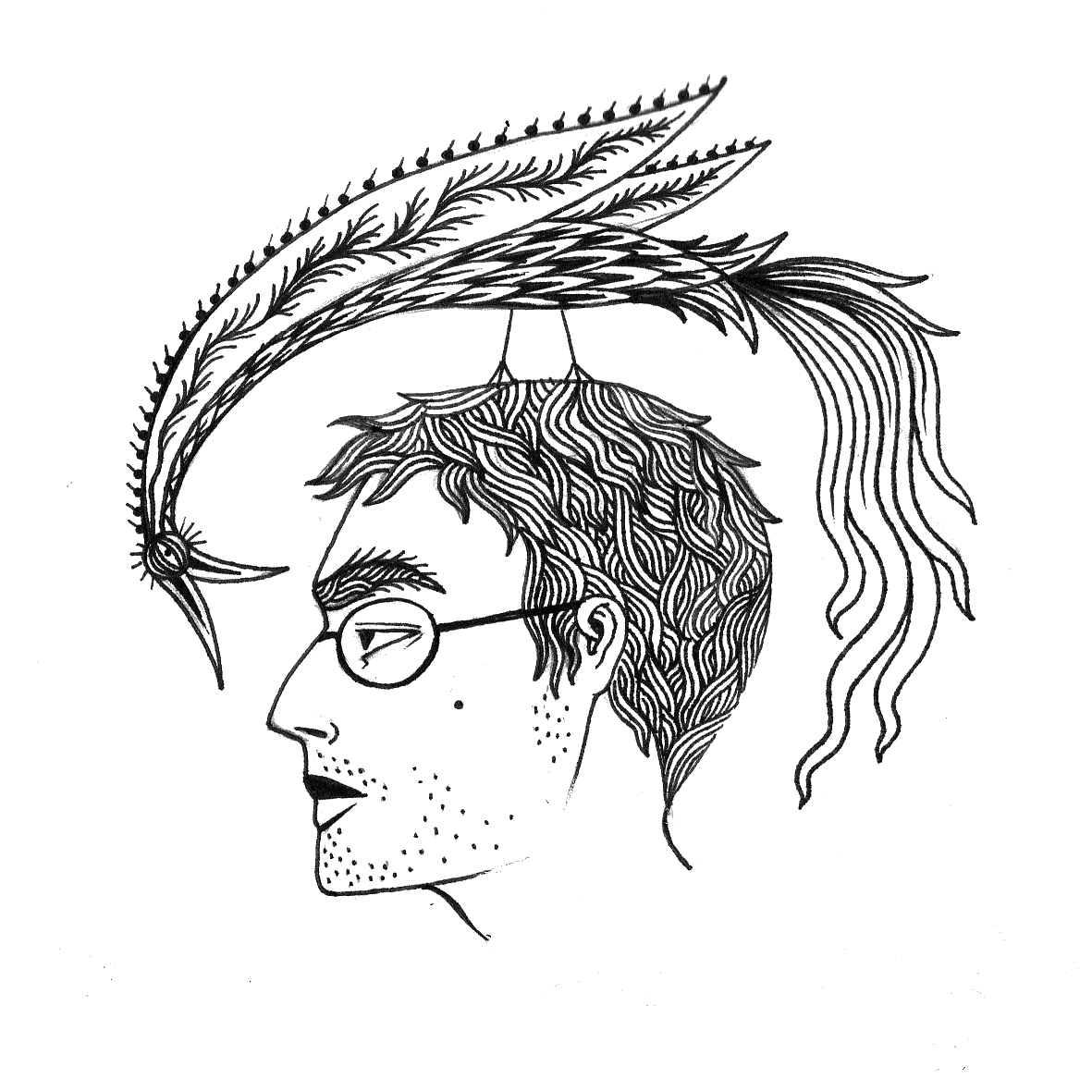Title of the work
Country of the First Edition
Country/countries of popularity
Original Language
First Edition Date
First Edition Details
Rafik Bougueroua, Thésée d’après l’œuvre de Plutarque. Lyon: Éditions Amaterra, 2015, 48 pp.
ISBN
Official Website
The book’s page on the website of the Éditions Amaterra (accessed: December 17, 2021).
Available Onllne
The free demo version of the book is available on the website of the Éditions Amaterra (accessed: December 17, 2021).
Genre
Adaptation of classical texts*
Illustrated works
Short stories
Target Audience
Children (6–12 years)
Cover

Courtesy of the Publisher.
Author of the Entry:
Angelina Gerus, University of Warsaw, angelina.gerus@gmail.com
Peer-reviewer of the Entry:
Katarzyna Marciniak, University of Warsaw, kamar@al.uw.edu.pl
Elżbieta Olechowska, University of Warsaw, elzbieta.olechowska@gmail.com

Courtesy of the Author.
Rafik Bougueroua
, b. 1975
(Author)
Rafik Bougueroua was born in 1975 at the confluence of the rivers Oise and Seine. Βefore turning to philosophy and the humanities he studied science. He earned a Master’s degree in philosophy and obtained qualifications for teaching in secondary schools (certificat d’aptitude au professorat de l’enseignement du second degrés, CAPES). Since 2003, he has taught French in the Hérault and lives in Pézenas. In cooperation with Éditions Amaterra, he writes books for children, among them: Thésée d’après l’œuvre de Plutarque [Theseus according to Plutarch], 2015; Cyrano d’après “Cyrano de Bergerac” d’Edmond Rostand [Cyrano according to Cyrano de Bergerac by Edmond Rostand], 2016; La légende de Zal [The Legend of Zal], 2017; and Gilgamesh et le secret de la vie-sans-fin [Gilgamesh and the Secret of an Endless Life], 2018.
Sources:
occitanielivre.fr (Accessed: December 17, 2021).
librairie-gallimard.com (Accessed: December 17, 2021).
lp-marie-curie-villeurbanne.ent.auvergnerhonealpes.fr (Accessed: May 2, 2020).
Bio prepared by Angelina Gerus, University of Warsaw, angelina.gerus@gmail.com
Questionnaire
1. As far as I know, in your writing there are not that many references to Antiquity. What inspired you to write a book about Theseus?
— The story of Theseus was one of my favorite myths in my childhood. I had several versions of the myth (all adaptations for children), but I was particularly fond of the one by Hawthorne. Later on, Borges’s short story Asterion struck my imagination. So when my publishing house asked me to adapt the myth for young readers, I took it as a challenge to say something different than some of my favourite writers.
2. Why did you choose this character?
— I wouldn’t say I chose it, it’s a decision we made with my publisher. But I was certainly happy with this proposal, for the reasons I mentioned above.
3. And why did you turn to Plutarch as your main source?
— I had to select one source and one only to put on the cover of the book, it was required for this collection. I felt Plutarch would give me more freedom to follow my own thread in the labyrinth of the myth because he gives a number of different versions of the story. He often seems to favour more prosaic explanations, which is my preference too. For instance, it’s difficult for a modern reader to accept the divine origin of a “historical” character, so having two origins, one human and one divine, compete with each other in the mind of the reader was for me something interesting to play with.
4. How did your work with the ancient text proceed, given that the potential reader was not only a child but also a contemporary child?
— I wanted the reader to follow the story from Theseus’s point of view, knowing what he knows and even forgetting what he forgets… But apart from the obvious simplifications, when I was writing, I didn’t really have a child-reader in mind, or perhaps only myself as a child.
5. Which themes from Plutarch's text proved to be the most difficult to convey?
— I don’t remember having much trouble adapting it. Anyway, my text had to be so brief that if I encountered any difficulty, I could simply exclude it.
6. Family relations (especially the issue of the father) and the process of growing up seemed to me to be as important in the book as Theseus' story itself: did you intend to bring the protagonist closer to the readers?
— Yes. Questioning your origins, or having an absent father, are themes that many children can relate to, I think, perhaps even more so in modern families.
7. Why do you think Antiquity is still relevant today and why would it be important for contemporary children?
— Antiquity, on the one hand, teaches us about virtues and, on the other, it does not hide the cruelty of life, two aspects absent in our contemporary reality. Children will always crave mythology because it touches the essence of what makes us human.
Prepared by Angelina Gerus, University of Warsaw, angelina.gerus@gmail.com

Courtesy of the Author.
Yann Damezin
, b. 1991
(Illustrator)
Yann Damezin is an illustrator and a comic book author based in Lyon. After graduating with honours from the Émile Cohl School in 2013, he joined an association Épicerie Séquentielle. Yann Damezin is passionate about dreamlike worlds, and his work is inspired by diverse influences: Persian miniatures, Italian primitives, expressionism, etc. His favourite techniques are scratch cards and gouache.
Sources:
lyonnais.hypotheses.org (Accessed: December 3, 2021).
bedetheque.com (Accessed: December 3, 2021).
Personal website (Accessed: December 3, 2021).
Facebook Profile (Accessed: December 3, 2021).
Twitter (Accessed: December 3, 2021).
Bio prepared by Angelina Gerus, University of Warsaw, angelina.gerus@gmail.com
Adaptations
The audiobook’s demo (pp. 1–15, in French) and the version adapted for dyslexics is available online at storyplayr.com (accessed: December 17, 2021).
Summary
The short story is based on the eponymous chapter from Plutarch’s Parallel Lives (Plut. Thes. 1–22). The focus is placed on the figure of Theseus, in particular on his childhood, growing up, and his relationship with his parents. Theseus’ duel with the Minotaur and his emerging feelings for the young Ariadne constitute the culmination points of the story. The narration ends with the hero’s return from Crete to Athens, following a victory over the Minotaur.
Analysis
The subtitle of the children’s book (“according to Plutarch”) and the biographical note Who is Plutarch? is followed by some information about Parallel Lives on the book’s last page (p. 48, cf. Addenda), which makes the text’s origin clear. However, the story entirely ignores Plutarch’s parallel between Theseus and Romulus.
Theseus is depicted in his childhood credibly and vividly. The boy, who greatly admires Hercules, compares himself to the hero and, playing with friends, imitates Hercules’ labours. A particular emphasis is placed on how much Theseus reflects on his father and why his name is hidden. The young hero constantly wonders whether he may be a criminal or a monster. This lack of knowledge makes him lonesome, withdrawn and even causes nightmares. In contrast to Plutarch’s version, his mother Aethra explains that his father’s name was hidden to protect Theseus’ life. But once the young man became strong, wise and noble in his heart, the mystery of fatherhood might be revealed.
The demigod is humanized in the children’s book. His noble character is represented not only through his thoughts but also through high-minded actions. For instance, to share the prey with poor families, Theseus divides a hunted boar into several parts. As the book tells, “he doesn’t spend a day not helping those who need it” (p. 14).
Scenes of violence, typical of the antique source text, are replaced by delicately submitted facts. Therefore, the fragment about Theseus murdering robbers is tactfully included in the phrase “he got rid of bandits on the way” (p. 22) and an added remark that they faced the same fate as their victims.
The chapter about the fight with the Minotaur is described very briefly, without any combat details. Despite the diverse and controversial information about the mythical creature provided by Plutarch, the author describes him as a monster with cruel eyes, a beast sitting inside the Labyrinth on a heap of skulls. No connections between Minos’ family and the Minotaur (or his origin) are mentioned.
As for the love between Theseus and Ariadne, the emphasis is on their first meeting (unlike Plutarch, who reveals mainly the theme of Ariadne’s life after parting with Theseus and her death). The fearless and virtuous young hero, who vanquished bandits and courageously led the mission to Crete, could not say a word to the girl. Such a portrayal brings him closer to the level of young readers and shows that even a hero, a demigod, has a lot of human traits, and each mortal has something heroic in their nature.
Contrary to Theseus’s biography by Plutarch, the book shows no intertextual elements, such as references to Hesiod, Aristotle, Euripides, Homer, Archilochus, Simonides, or Philochorus. At the same time, in an illustration at the end of the story, the Colchian sorceress Medea (who is the wife of Aegeus in the book), fleeing from both her husband and son-in-law, is shown in a chariot driven by serpents (p. 28) – exactly like in Euripides’ tragedy.
There are no comments on other Greek myths, historical or topographical facts, which abound in the text of Plutarch (for instance, no mention is made of the sacrifices, of various perils met by Theseus on the way from the Peloponnese to Athens, of the story of the Marathonian Bull or the Pallantides). The genealogy of the protagonist is simplified: his kinship with Hercules remains undisclosed; the oldest ancestor mentioned in the book is Pittheus, Theseus’ grandfather. To adapt the story for young readers, Rafik Bougueroua eliminates most of the minor characters present in the ancient text (the pilot of Theseus’ ship, whether Nausithous mentioned by Philochorus or Phereclus named by Simonides; Taurus, the general of Minos etc.). The author also ignores the story of the ship of Theseus, the festival of Oschophoria in honour of Dionysus and Ariadne, the founding of Athens, or, for example, the relationships between Theseus and Phaedra.
The reduction of mythological and historical references makes the text less cluttered and easier to understand for a young audience. Furthermore, by focusing on Theseus’ childhood, his questions about his father or on Theseus’ first love, the text becomes truly relatable for the readers.
Further Reading
Cueva, Edmund P., “Plutarch’s Ariadne in Chariton’s Chaereas and Callirhoe”, American Journal of Philology 117 (1996): 473–484.
Plutarch, Lives, Volume I. Theseus and Romulus. Lycurgus and Numa. Solon and Publicola, Cambridge: Harvard University Press, 1914.
Ov. Met. VIII.152–182, in Ovid, Metamorphoses, trans. Brookes More, Boston: Cornhill Publishing, 1922. Available online in the Perseus Digital Library (accessed: December 17, 2021).
Walker, Henry J., Theseus and Athens, Oxford: Oxford University Press, 1995.
Addenda
Along with Penelope by Aurélie Grand and Ulysse by Jean-Luc Langlais, the book belongs to the collection Les grands textes à hauteur d’enfant (The great texts from a child’s perspective) issued by Lyon-based publishing house Éditions Amaterra. Several childrens’ texts on famous personalities of Antiquity, such as Orpheus, Electra, Cleopatra are also presented within other series, Les grands personnages à hauteur d’enfant (The great characters from a child’s perspective). (All links accessed: December 17, 2021).
The book's demo from the Éditions Amaterra website, used with the Publisher's permission (accessed: January 18, 2022):






